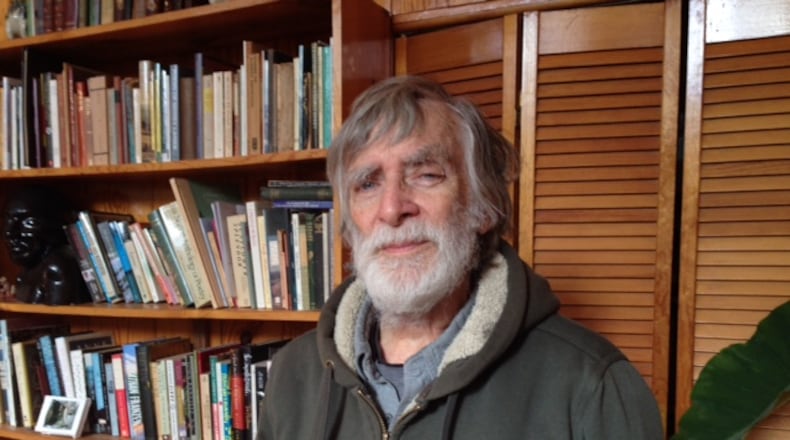— August Derleth
The Almanack Horoscope
For the Third Week of Late Fall
Moon Time: The Paperwhite Moon enters its second quarter at 12:03 p.m. on the November 26. Rising in the afternoon and setting in the middle of the night, this moon travels overhead in the evening.
Sun Time: On November 23, the sun entered the early winter sign of Sagittarius and reaches within two degrees of solstice at the same time. At the end of November, sunset has reached to within just a few minutes of its earliest time throughout the nation. The latest sunrise, however, is still about half an hour away.
Planet Time: Jupiter and Mars are the morning stars, but Venus is not visible at all, and Saturn fades from view, as well.
Star Time: In the dark, Orion becomes unmistakable now as early winter approaches, and Sirius and Procyon follow him out of the southeast after midnight. Aries is high in the center of the sky this week, a little west of Perseus. And the summer stars have almost disappeared. August's Vega is setting. Cygnus, the swan of the Northern Cross, and the gauge of autumn's progress, is disappearing south. October's Pegasus and Andromeda fall away behind it.
Weather Time: The November 24 Front: This year the November 24th front coincides with a weak moon (entering its fourth phase and close to apogee), a coincidence that suggests this second-last front of the month could be less disruptive than usual during the Thanksgiving period. November 25 is the date of the latest recorded killing frost above the Ohio River.
The November 28 Front: The last cold front of November is almost always strong, and it typically brings rain and gloom to the South and snow to the North. It also brings a strong chance of freezing temperatures into the Gulf States and the Carolinas.
Zeitgebers, Events in Nature that Tell the Time of Year: In a moderate autumn, a few snapdragons and yarrows can still be budding. The dead nettle still has blossoms. Basal leaf clusters grow back on carnations, sweet rockets, chickweed, henbit, celandine, garlic mustard, poppies, lamb's ear and daisies. Until the hardest frost, St. John's wort, lavender, butterfly bush, euonymus and Japanese honeysuckle keep their leaves. The mint is still fragrant. Parsley and thyme are still green and firm for seasoning.
Farm and Garden Time: All the major harvest is complete; fall seeding should be finsihed; the garden's pretty well picked clean and the cover crops have sprouted. The Christmas tree harvest has begun, and the last poinsettias have come north.
On the farm, it’s time to plug in the electric bucket heaters and try to keep the water near 50 degrees for pregnant livestock. Maintain good ventilation in the barn, and watch for stress from overcrowding. Keep on the lookout for pneumonia in your animals.
Around the yard, stake young shrubs and trees. Wrap young transplants to protect them against frost cracking Parsley and thyme should be brought inside pots for winter seasonings.
Marketing Time: Hanukkah takes place December 12-20. Consider adding to your Christmas marketing by making Hanukkah baskets that include items such as fruit or baked goods.
Mind and Body Time: Thanksgiving opens the six-week holiday season in the United States, a difficult time for some, a festive family period for others. Adding to the complexity of late November through December, leaf fall is virtually complete, and temperatures, which may have moderated in an "Indian Summer," become much colder. In most years, clouds become more frequent, and increasing wind speed approaches winter levels. All these factors mean S.A.D.
Creature Time (for fishing, hunting, feeding, bird watching): Fishing should be most productive in the afternoon this week as the barometer falls at the approach of the November 24 and 28 cold fronts. A secondary rutting period for deer begins near the end of November and lasts until early to mid December. Early sprouting winter wheat could bring deer to those tender green shoots. Staghorn sumac fruit clusters can also be very attractive to game.
A Wreath for Spring
Twelve weeks from now, Late Winter cedes to Early Spring throughout the East and Lower Midwest. Pussy willows catkins are cracking by then, and white tips of snowdrops have emerged from the mulch and skunk cabbage has opened. Purple cress has budded along the river, Cardinals sing before sunrise. Sandhill cranes fly north. Flocks of robins arrive to begin their mating chorus.
And if I place a cluster of twelve candles on the dining room table, lighting one each week, I keep a semblance of my childhood Advent ritual while creating another procession toward the end of the cold. By the time the last candle is burning, the sky is no longer dark when I have supper at six o’clock.
Bedding plant seeding started with new moon on November 18, and I planted a few seeds then. My sprouting place is near the furnace in the attic. I set up two grow lights and hang them low, leaving space for flats above them maybe three or four inches. I am partial to geraniums and banana seeds this early in the season. Outriders of aconites and crocus, the new sprouts pace the lengthening day, replacing candles in February, opening the door to March and April.
OTHER POOR WILL’S ALMANACK COLUMNS
Fall welcomes the Apple Cider Moon, Leonid meteors
Daylight Saving Time comes to an end
First chance for snow flurries
Poor Will’s Almanack for 2018 is now available. Order yours from Amazon, or, for an autographed copy, order from www.poorwillsalmanack.com. You can also purchase Bill Felker’s new book, Home is the Prime Meridian: Essays on Time and Space and Spirit, at the same sites.
About the Author
